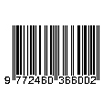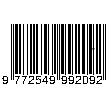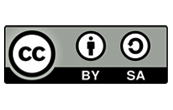Online Submissions
Already have a Username/Password for Tourism and Hospitality Essentials Journal?
Go to Login
Need a Username/Password?
Go to Registration
Registration and login are required to submit items online and to check the status of current submissions.
Author Guidelines
Tourism and Hospitality Essentials Journal publishes twice in a year, in April and October. All articles published should be in accordance with the specified requirements. After an article is submitted, it will be checked through “Turnitin”, and then reviewed by the independent experts. In the blind review process, the article will be assessed its content (title, abstract, introduction, literature review, method, results and discussion, conclusion) and organization (style guide, template, number of pages, Figures, tables, pictures, and references). The article could be submitted to our email: pariwisata@upi.edu
It should follow the style guide and the template of THE Journal : Tourism and Hospitality Essentials Journal. The template could be downloaded from the web portal. We highly recommend the author to copy the content of the article to the template partially rather than trying to replicate the template from the scratch.
Style Guide
- The article must be made in A4 (210 x 297 mm) paper size with top margin 3 cm, bottom margin 3 cm, right margin 3 cm, and left margin 3 cm.
- The article should not be more than 15 pages, single-spaced, Times New Roman, font size 10. All paragraphs are indented first line 0.5 cm. The content of the article is in two columns. Before and After Spacing for all paragraphs are set to 0 pt.
- The title should not be more than 20 words, Times New Roman, font size 14, bold, centered, and uppercase
- Authors’ name is written in Times New Roman, font size 12, centered and sentence case.
- In affiliation, state only the name of the institution, do not write the department. The font style is Times New Roman, font size 12, centered and sentence case.
- Please provide email addresses of all authors.
- The abstract should be written in one paragraph and should not be more than 300 words. TNR, font size 10, single spacing. Follow the following pattern: the general statement about the importance of the topic, the gap in literature or discrepancies between theories and practices, the purpose of the study, method, main findings, and conclusion.
- Write the main body of the article in two columns.
- Introduction contains research background, statement of objective(s) or research question(s).
- In the literature review, at least 80% of the citations are from the latest publication. It is recommended to cite from reputable journals. Authors are expected to summarize the previous studies related to the topic and explain theories comprehensively.
- In the method section, the authors should accurately state the data sources, describe how the data were collected and explain the procedures used to analyze the data.
- In results and discussion part, authors should describe the results of the data analysis in accordance to answer the research question(s)/objective(s) and their meanings seen from current theories and references of the area addressed.
- All equations should use Cambria Math font and the size is 10. Make sure they are placed in the center.
- All tables use Times New Roman font. The font size for the title of the table is 10, while the font size for the content and the source of the table is 8. Avoid using vertical line and use single line spacing.
- The font used in the figure is Times New Roman, the font size for the content and the source is 8 and for the title is 10.
- Some tables or figures may need more space; therefore, it is necessary to put a bigger table or figure in a one column setup.
- The conclusion consists of the summary, restatement of the main results.
- Acknowledgments indicate sources of funding or help received in carrying out your study and/or preparing the manuscript if any before the references.
- Citation and references follow APA style and the latter should be included at the end of the article.
- Proofs will be sent to the author for correction and should be returned to the editor by the deadline given.
- When submitting the manuscript, please also submit with completed “Author's Identity Form”.
All of the articles that have been submitted are free of charge.
Submission Preparation Checklist
As part of the submission process, authors are required to check off their submission's compliance with all of the following items, and submissions may be returned to authors that do not adhere to these guidelines.
- The submission has not been previously published, nor is it before another journal for consideration (or an explanation has been provided in Comments to the Editor).
- The submission file is in Microsoft Word document file format using the template given.
- The article is written refers to The Journal standard writing style
- The text adheres to the stylistic and bibliographic requirements outlined in the Author Guidelines, which is found in About the Journal.
- If submitting to a peer-reviewed section of the journal, the instructions in Ensuring a Blind Reviewhave been followed.
Copyright Notice
Authors who publish with this journal agree to the following terms:
- Authors retain copyright and grant the journal right of first publication with the work simultaneously licensed under a Creative Commons Attribution-ShareAlike 4.0 International License. that allows others to share the work with an acknowledgment of the work's authorship and initial publication in this journal.
- Authors are able to enter into separate, additional contractual arrangements for the non-exclusive distribution of the journal's published version of the work (e.g., post it to an institutional repository or publish it in a book), with an acknowledgment of its initial publication in this journal.
- Authors are permitted and encouraged to post their work online (e.g., in institutional repositories or on their website) prior to and during the submission process, as it can lead to productive exchanges, as well as earlier and greater citation of published work (See The Effect of Open Access).
Privacy Statement
The names and email addresses entered in this journal site will be used exclusively for the stated purposes of this journal and will not be made available for any other purpose or to any other party.








